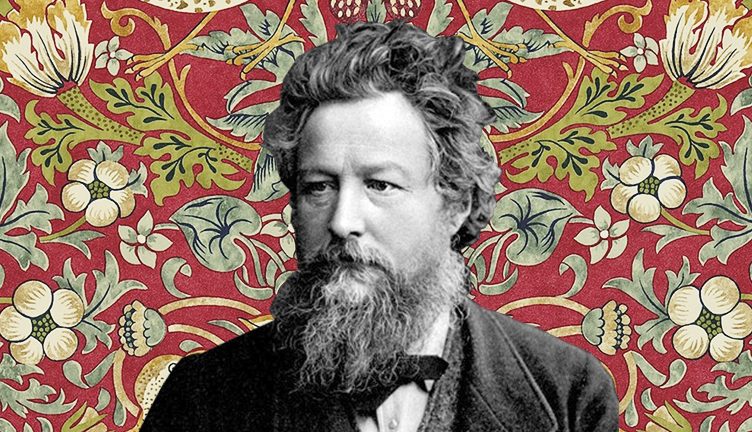Manjeera
24th March, ON THIS DAY
“History has remembered the kings and warriors, because they destroyed; art has remembered the people, because they created.”
― William Morris
William Morris was a British artist, writer, and social activist who played a key role in the Arts and Crafts movement of the late 19th century. He is remembered as a celebrated designer, who went against the grain and rejected the utilitarian mentality of Victorian England that focused on industrial progress but ignored the rest.
Morris was firmly against the mass-production of goods and objects, which were gaining fast popularity among the British, and advocated for handmade goods and resurgence of cottage industries. Morris had left a firm legacy as one of the pioneer designers who valued the look and aesthetic of a space, focusing on more than the practical necessities. He spent much of his life championing the importance of traditional craftsmanship, and many of his designs are still actively used today.
Morris’ childhood and life in Oxford
William Morris was born in Walthamstow, East London, in 1834 to a privileged family and had shown interest in design at a young age. He was left with an inheritance large enough to warrant him a carefree life, without the need to find a job. He explored parks, churches and forests as a young child and developed a fondness for buildings and landscapes.
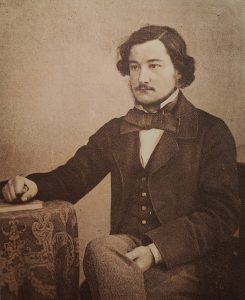
Morris went to Oxford University, where he met several like-minded individuals who would go on to become lifelong friends and collaborators. Together, they formed the Oxford and Cambridge Magazine, which aimed to challenge the prevailing artistic and literary conventions of the time. This was where Morris’ interest in socialist ideals started; he viewed the mass-produced goods as the products of dehumanised industries. These products were both poor in quality and “unnatural” according to him, as they were produced from the alienation of man to the product.
Pre-Raphaelites and Neo-Gothic influences
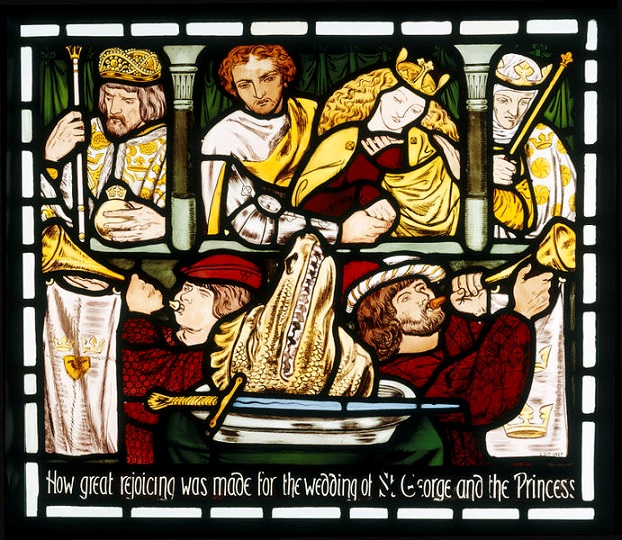
Courtesy: Victoria and Albert Museum
In 1856, Morris began working as an apprentice to Gothic Revival architect G.E. Street, where he learned the traditional skills of working with stone, wood, and stained glass. This experience would prove crucial to Morris’s later work as a designer of furniture, textiles, and wallpaper. He visited northern France and was very taken by the 15th century paintings of Hans Memling and the architecture of the older medieval Cathedrals. His interests took a drastic turn when he discovered his fascination with medieval art as well as the Pre-Raphaelites. Dante Gabriel Rossetti, a founding member of the Pre-Raphaelite movement, convinced Morris to pursue painting, but this did not last long. Morris returned to creating furniture, but the influence of the Pre-Raphaelites can be quite visibly seen in his wallpapers. Rossetti also helped out Morris in the later days, often giving his sketches and designs for Morris’ firm. His most memorable collaboration with Morris is the stained glass panel depicting the story of St George and the Dragon, where Rossetti made the sketch and panel design and Morris handled the rest of the design.
The Red House
Morris fell in love with the daughter of a local stableman and married her, but this was not a happy marriage. His wife, Jane Burden, was extremely beautiful, serving as the source of inspiration of the Pre-Raphaelites, who viewed her as the ideal of beauty. She was an embroiderer and another influential member of the Arts and Crafts movement. Morris commissioned his architect friend Phillip Webb to build the Red House in rural Kent for them.
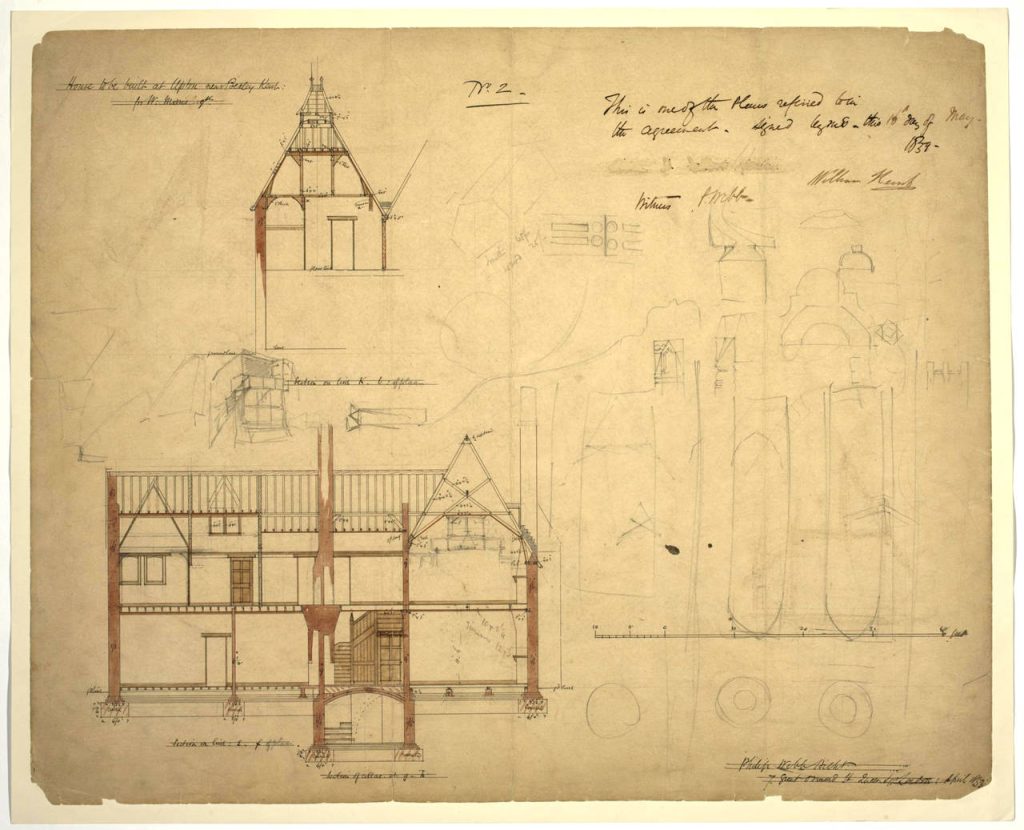
Courtesy: Victoria and Albert Museum, London
The Red House was an architectural and design achievement; bearing the medieval spirit, this house was furnished and meticulously decorated by the couple. They rejected the commercial offerings and sought the help of their artist and artisan friends to finish the house, which hosted exquisite hand-drawn murals, hand-embroidered fabrics and furniture designed by Morris.
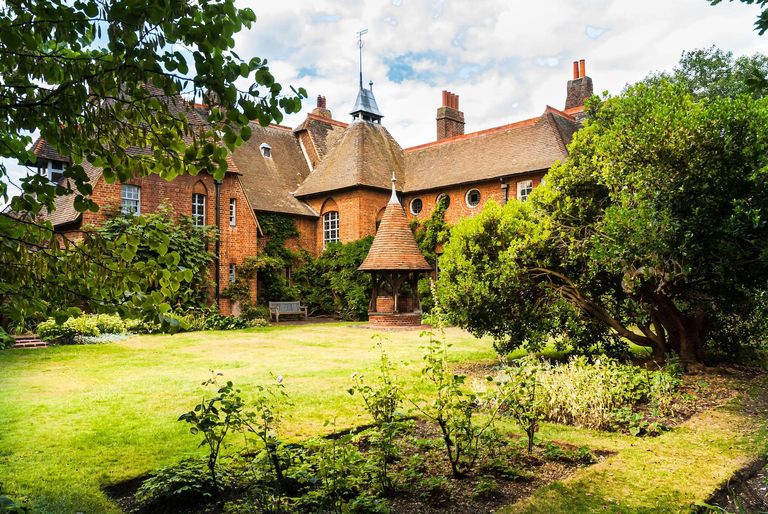
Courtesy: Stuart Ayton
Morris & Co: center of Arts and Crafts movement
The construction of the Red House catalyzed the creation of Morris’s interior design and decorative arts company: Morris, Marshall, Faulkner & Co. Morris founded this with a group of friends and fellow artists with the aim of reviving traditional techniques of craftsmanship. The company wanted to produce high-quality handcrafted goods that were both beautiful and functional.
Under Morris’s leadership, Morris & Co. became a major force in the Arts and Crafts movement, which emphasised the importance of handmade goods and rejected the mass-produced, machine-made products of the Industrial Revolution. They worked within the Neo-Gothic school of design but had their own trademark styles. The firm did not limit its production to just furniture, but also produced stained glass windows, elaborate murals and even delved into metalwork. It became extremely popular with the rich and achieved a level of elitism, contradicting Morris’ original intentions.
Morris’ wallpapers and designs
Morris shifted his interest from painting to designing wallpapers. His textile designs are one of his biggest legacies and are one of the most reproduced patterns in modern times. The most famous of his wallpapers was one of his first designs: the Trellis, featuring intricate patterned leaves, birds and red flowers, inspired by the roses growing on the trellis of the Red House. He also created a few more iconic designs that are still used today, the Daisies (1864), Acanthus (1875) and Fruit and Pomegranate(1866), to name a few. He also designed a few iconic furniture pieces around this time; including the Morris chair.
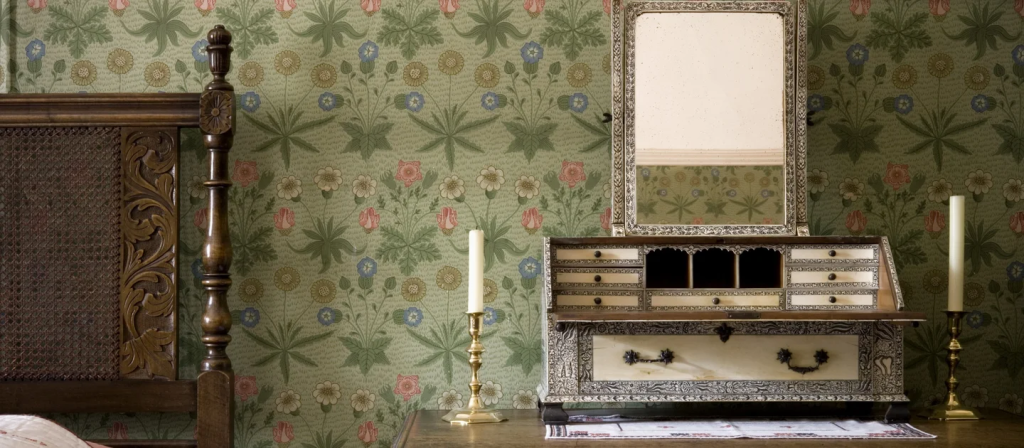
Courtesy: National Trust of UK
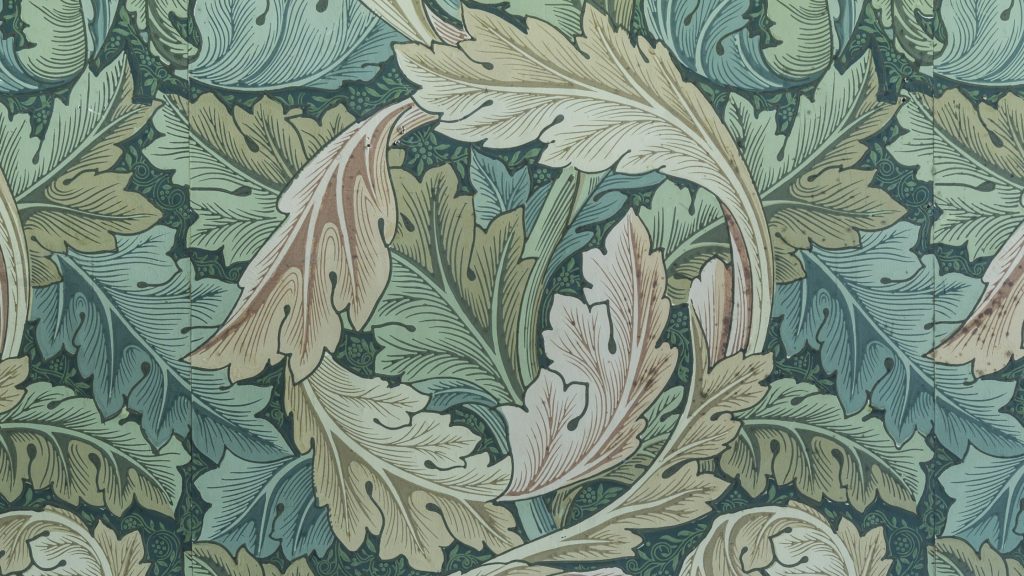
Courtesy: Victoria and Albert Museum, London
Morris’ artistic ideals and legacy
Morris was also a prolific writer and poet, and was greatly influenced by Marxism and anarchism. Morris participated in politics and used his writing to advance his social and political beliefs. He was a committed socialist and believed that the widespread use of machinery in manufacturing was harmful to workers and society as a whole. In his writings, he advocated for a return to traditional methods of production and for a more equitable distribution of wealth. In a famous quote, Morris says:
“…I do not want art for a few; any more than education for a few; or freedom for a few… ”
Morris’s legacy can be seen in the continuing importance of the Arts and Crafts movement, which has influenced generations of designers and artists. His emphasis on the value of traditional craftsmanship and the importance of beauty in everyday life remains relevant today, as more people seek out handmade, artisanal goods that are both functional and aesthetically pleasing.
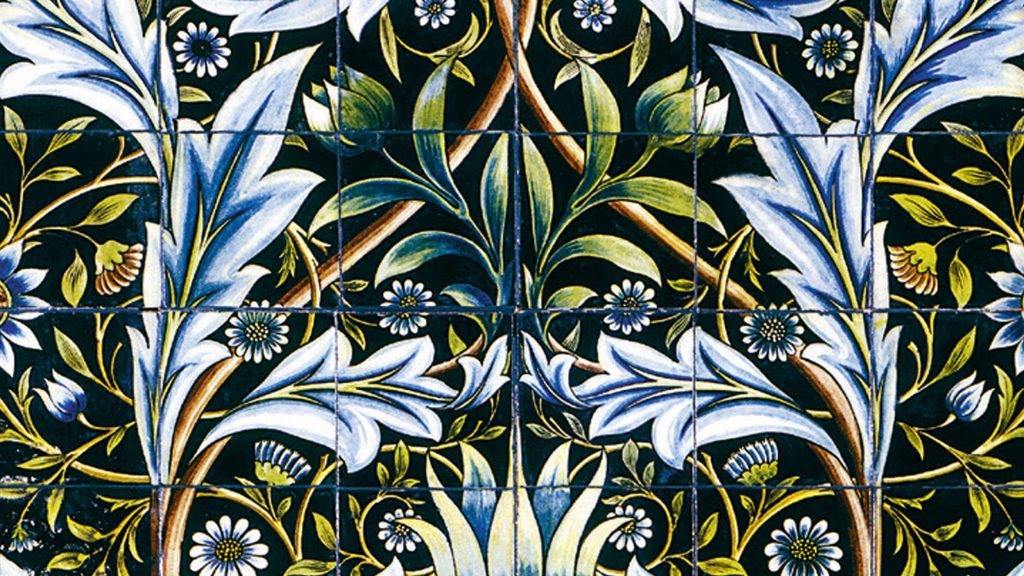
Courtesy: Victoria and Albert Museum, London.

